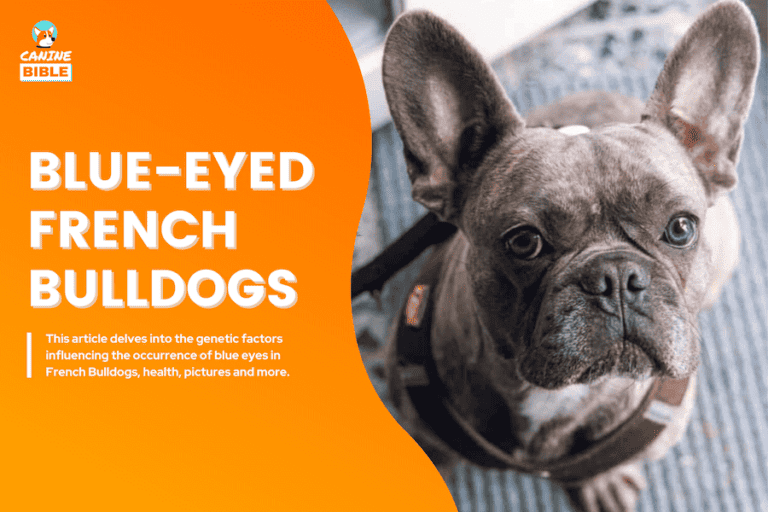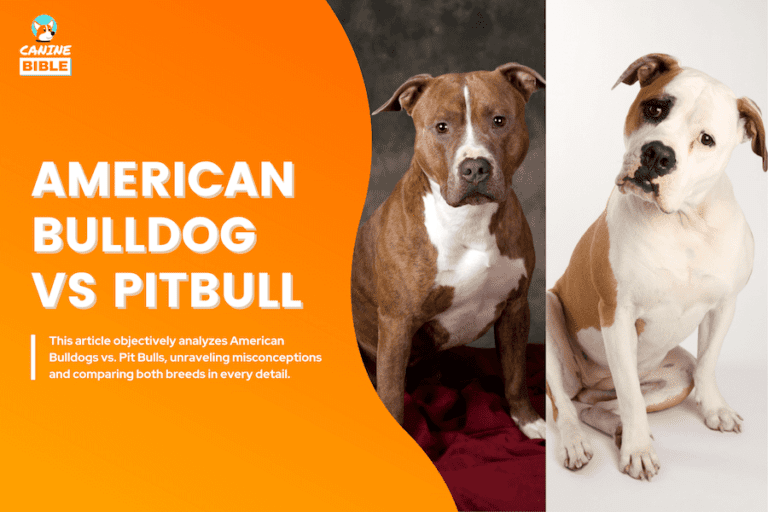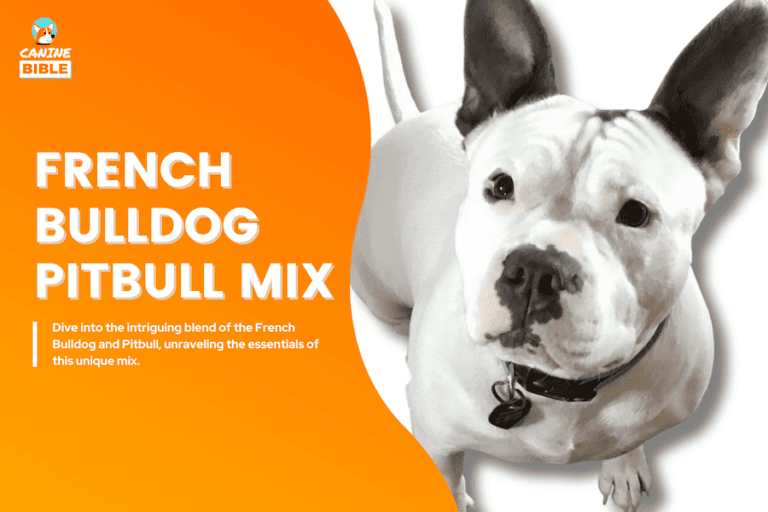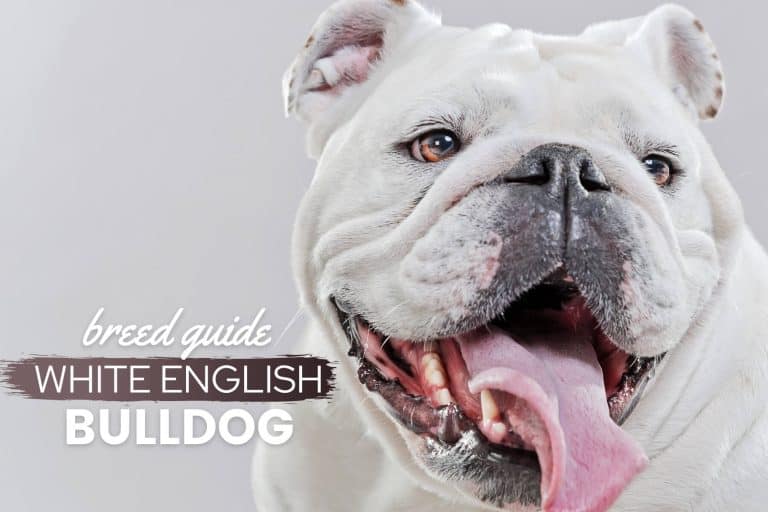Pomeranian Husky Mix: Pomsky Breed Guide [Price, Pictures, Personality & More]
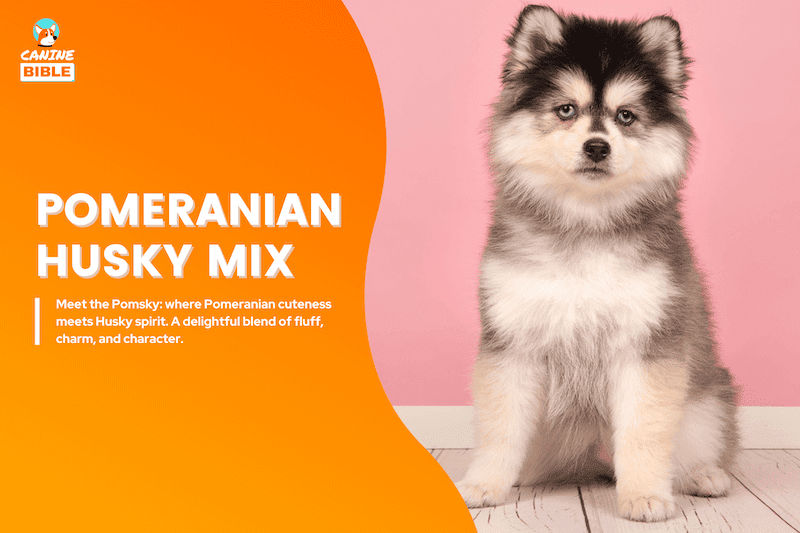
Canine Bible is reader-supported. We receive affiliate commissions via some of our links. This doesn’t affect rankings. Learn more.
This guide offers the most comprehensive insight into the Pomeranian Husky dog breed, commonly called the Pomsky. This designer breed is a mix between the Pomeranian and the Siberian Husky. In this article, we delve into the enchanting world of the Pomeranian Husky mix, exploring the many aspects that make the Pomsky breed a fashionable choice and a loving companion for life. Learn what it takes to look after Pomskies and whether or not they are a good fit for you and your family’s lifestyle. Let’s dive in!
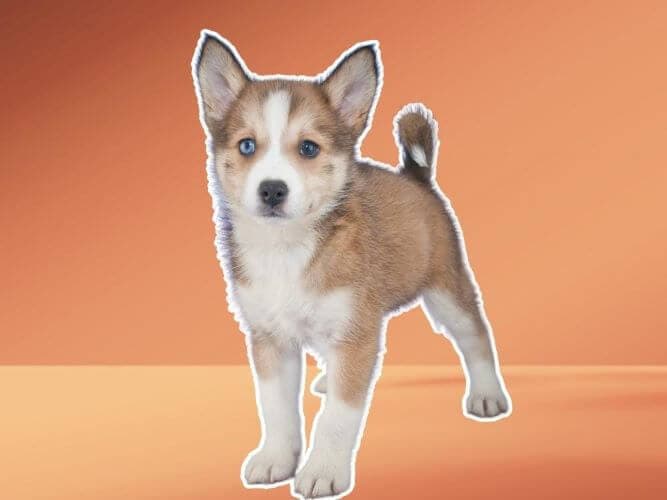
Why you should trust us: Our writers, editors and in-house veterinarians spend hours analyzing and reviewing products and services to help find what’s best for you. Read the product review methodology and editorial mission to find out how we test, analyze, and rate.
Pomeranian Husky Breed Overview
Height
12 – 15 inches (Male)
10 – 13 inches (Female)
Weight
20 – 30 pounds (Male)
15 – 25 pounds (Female)
Life Expectancy
12 to 15 years
of age
Colors
Grey, black, white or
black and white
Breed Traits & Characteristics

The first Pomeranian Husky was bred
March 5th, 2012
Pomeranian Husky History & Breed Origin
The Pomeranian Husky Mix, or Pomsky, ranks among the most popular designer dog breeds. This hybrid was created by crossing the Siberian Husky with the Pomeranian, primarily through artificial insemination, to avoid complications, according to Dr. Michael G. Kowalski, a professor of veterinary medicine at the University of California, San Diego.
The first official record of breeding Pomeranian Huskies is dated March 5th, 2012. This event occurred in Arizona, where Tressa Peterson and Joline Phillips successfully bred the first litter of Pomskies through artificial insemination. However, unverified claims suggest that accidental Husky and Pomeranian mix litters may have existed before 2012, but the breed's precise origins are still unclear.
Breed Popularity & Ranking
As Pomskies gained popularity online, the high demand and limited availability led to the rise of unethical breeders and scammers. Various associations and kennel clubs were established to maintain the breed's integrity, including “The Pomsky Club of America” and the “International Pomsky Association.”
The American Kennel Club does not recognize the Pomeranian Husky mix, as it is a hybrid of two purebreds.
Pomeranian Husky Profile
Pomeranian Husky Appearance
Pomeskies are known for their striking eyes, similar in shape to Siberian Husky's. Pomskies' eyes are round and can be brown, blue, hazel, or amber; sometimes, they may have differently colored eyes.
The Pomeranian Husky boasts a thick, double-coated, silky fur that can be black, gray, cream, white, fawn, or brown, often in combinations of these colors. Physically, this mixed breed has a muscular, well-proportioned body with strong legs and broad shoulders. The tail is notably furry.
These dogs have round noses and pointed, upright, and hairy ears. However, their faces are round with a long, narrow snout and a thin, flat mouth, giving them a distinctive look.
Pomeranian Husky Personality & Temperament
The temperament of the Husky Pomeranian Mix is often inherited from the chatty howling and whining behavior of their Husky parents, along with the high-pitched yapping typical of Pomeranians.
The Pomeranian Husky is a humorous, intelligent, and somewhat stubborn dog. Known for being vocal like their Husky lineage, this is an important consideration for those living in condos or apartments. They thrive on attention and praise and possess friendly and energetic personalities.
While generally sociable with people and family members, Pomeranian Huskies can experience anxiety and discomfort due to 'small dog syndrome.' Early socialization is crucial to prevent nervous or aggressive behavior towards strangers. Despite this, Pomskies are affectionate and can form deep bonds with their owners, showing love to the entire family. As a smaller breed, they might feel more threatened in certain situations than larger breeds. They also exhibit a high prey drive, so caution is advised around smaller animals.
Pomeranian Husky Health
Pomskies are a relatively new breed, with limited research on their common health issues. However, they may be prone to health problems in Siberian Huskies and Pomeranians. Potential health issues for your Husky Pomeranian mix may include:
While Pomskies might inherit these issues, mixed-breed dogs like them are generally healthier and may live longer due to greater genetic diversity. A significant study at the University of California-Davis's School of Veterinary Medicine, involving over 27,000 dogs, found that purebreds were at higher risk for at least 10 of 24 genetic disorders studied.[1]
Recommended Health Tests For Pomskies:
Pomeranian Husky Food & Nutrition
The nutritional requirements of your Pomsky depend on various factors, including weight, health conditions, size, age, and activity level. A Pomsky's diet should contain the six essential nutrients as outlined by The Association of American Feed Control Officials (AAFCO). Given their size range and energetic disposition, a diet suited for small to mid-sized dogs is typically appropriate for Pomskies. Our best dog food for Pomskies article covers everything you need to know about Pomsky nutrition along with our top food brand for this breed.
On average, most Pomeranian Huskies will require about 690 calories per day. If you're giving treats to your Pomsky, adhere to the 10% rule: 621 calories (90%) from food and 69 calories (10%) from treats. For precise calorie calculations, estimate your dog’s weight and use a dog calorie calculator.
Pomeranian Husky Exercise Requirements
Pomskies are energetic dogs that need ample physical activity to stay healthy and expend energy. A daily walk of at least 30 minutes is essential. Additionally, provide opportunities for play and running, either in a park or your yard, to fully utilize their energy. Engaging in agility dog sports like frisbee or swimming can also be enjoyable for both you and your Pomsky.
Pomeranian Huskies are highly intelligent and require mental stimulation as well. Offer them toys and puzzles that challenge their intellect, such as Nina Ottosson By Outward Hound or Pet Zone IQ Treat Ball, which provide mental engagement through play. Pomskies adapt well to apartment living as long as they get their regular outdoor exercise. They are also well-suited for colder climates, enjoying the chance to stretch their legs outdoors.
Pomeranian Husky Training
Pomskies might be easy to train. However, they might also inherit the Pomeranian's stubbornness and the Siberian Husky's willfulness. Effective training involves assertive leadership to ensure your Pomsky becomes a happy and obedient pet. Canine psychologist Stanley Coren ranks Pomeranians as "bright dogs," capable of learning a new command with 5 to 15 repetitions. Conversely, Huskies are above-average learners, mastering new commands within 15 to 25 repetitions.
The key to training Pomskies is positive reinforcement and consistency. Pomskies respond well to reward-based training, often learning new commands quicker than average dogs. However, they might assume the dominant role without established leadership, leading to disobedience.
This breed naturally guards and can be wary of other animals, making socialization training crucial. Fortunately, aggressive behavior is rare in Pomskies. Overall, Pomskies are highly trainable, considering these factors.
Pomeranian Husky Intelligence
Pomskies are notably smart canines. Their parent breeds, the Siberian Husky and Pomeranian are both known for their intelligence, particularly the Pomeranian. Siberian Huskies rank 74th and Pomeranians 28th in Stanley Coren's dog intelligence trials. Given their heritage, you can expect your Pomskies to have exceptional problem-solving abilities and learning capacity, often surpassing that of an average dog. However, remember that intelligence can vary among individual dogs.
Pomeranian Husky Breeding
Breeding a Pomsky is a specialized process that typically requires artificial insemination due to the significant size difference between the two parent breeds. The female in the breeding pair is usually the Siberian Husky, while the male is the Pomeranian. The process involves tracking the ovulation cycle of the female Husky and timing the insemination carefully. Given the complexities and risks involved, it is highly recommended that such breeding be conducted by professional breeders or under the guidance of veterinary experts.

What To Expect When Caring For a Pomsky
Owning a Pomsky is more than a privilege; it's a responsibility. Dogs rely on their owners for basic necessities like food and shelter, but they truly deserve more than just the basics. If you decide to bring a Pomsky into your life, it's essential to recognize and embrace the full extent of commitment required for responsible dog ownership.
Pomeranian Husky Mix Price
The popularity of the Pomskies has led to a significant increase in their price. The average Pomsky price ranges between $2,000 and $5,000. The high cost is due to the specialized breeding process, high demand and the limited number of puppies available. Prices are higher for Pomsky puppies with sought-after traits, like bright blue eyes, especially if they closely resemble Huskies.
In addition to the purchase price, the annual cost of caring for a Pomsky is around $2,000, which is more than many other breeds. Be cautious of unusually cheap offers, often below $1,000, as they may indicate backyard breeders who lack proper breeding knowledge and care. It's best to buy from reputable, recognized breeders.
Where to Buy A Pomeranian Husky?
When searching for a Pomsky, start by exploring the options with local breeders in your area. You can also look online or on social media for Pomeranian Husky mix puppies for sale. It's crucial to ensure any dog you consider comes with proper health documentation.
Online Marketplaces
For pre-screened, healthy teacup puppies, Pawrade and PuppySpot are recommended resources, offering puppies from reputable U.S. breeders.
Rescue Shelters
We recommend starting with local animal shelters or dog rescue organizations. Online communities, such as Facebook groups, can also be a resource. While Pomskies are rarely available for free, opportunities can occasionally arise.
Pomsky Breeders
Finding a reputable Pomsky breeder can be difficult due to the complex nature of breeding this mix. Start by searching locally within your state. If local options are unavailable, you might need to travel out of state. When purchasing from a breeder further away, consider the possibility of shipping the puppy if you're unable to pick it up. It's important to request medical records and certifications for the parents and the Pomsky to verify health screenings, ensuring a higher likelihood of your puppy being healthy. Additionally, the Pomsky Club of America's approved breeder list is another reliable option for finding a Pomsky.
Pomeranian Husky Mix Full Grown
Here is a visual of what a full-grown Pomsky looks like.
Must Know Before Bringing Home A Pomsky
If these conditions align with your lifestyle and living situation, a Pomsky could be a suitable pet for your family. Otherwise, it might be wise to consider other breeds.
To better understand if a Pomsky is the right fit for you, watch videos featuring experienced Pomeranian Husky owners. They provide insights and share their experiences with the breed, offering valuable perspectives to help you make an informed decision about welcoming a Pomsky into your home.
Pomeranian Husky Pictures
Pomskies come in various colors, reflecting their Pomeranian and Husky heritage. Common hues include white, red, brown, black, grey, and blue-eyed varieties. The color can range from a Pomeranian-like fox color to those that closely resemble a Siberian Husky, providing a diverse palette of appearances. These various colorations contribute to Pomsky's growing popularity.
White Pomsky
Red Pomsky
Brown Pomsky
Blue-eyed Pomsky
Black Pomsky
Grey Pomsky
Pomsky Frequently Asked Questions
Pomeranian Husky Mix — Conclusion
In conclusion, the Pomsky breed, a mix of Pomeranian and Siberian Husky, offers a unique blend of characteristics from both parent breeds. While owning a Pomsky brings joy and companionship, it also entails significant responsibilities, including regular grooming, exercise, and proper training. Prospective owners should thoroughly research and prepare for the commitment involved in caring for a Pomsky. Be mindful of the financial commitment, as Pomskies can be expensive. In summary, Pomskies are versatile, enjoyable companions, offering loyalty and love to their owners. Embracing responsible ownership is critical to ensuring a happy and healthy life for these charming dogs.
Like It? Subscribe & Share!
Sources
Canine Bible uses only high-quality sources, including peer-reviewed studies, to support the facts within our articles. Read our editorial process and product review methodology to learn more about how we fact-check, test products, and keep our content accurate, reliable, and trustworthy.
- Bellumori, T. P. (2012). Prevalence of inherited disorders among mixed-breed and purebred dogs: 27,254 cases (1995–2010). Journal of the American Veterinary Medical Association, 242(11), 1549.
Canine Bible authorship represents the unified voice of our entire editorial team and our in-house veterinarians rather than a single author. Each article, blog post, and review published under the Canine Bible name undergoes a rigorous review process, involving all team members to guarantee accuracy and up-to-date in accordance with the latest veterinarian research. This collaborative effort is an integral part of our editorial process and aligns with our four pillars of content creation. This approach ensures our content is backed by expert knowledge and factual information, offering our readers reliable, actionable, and trustworthy content.


